HOME IMPROVEMENT
How to Prevent Crown Rot in Orchids: Essential Care Tips for Healthy Plants
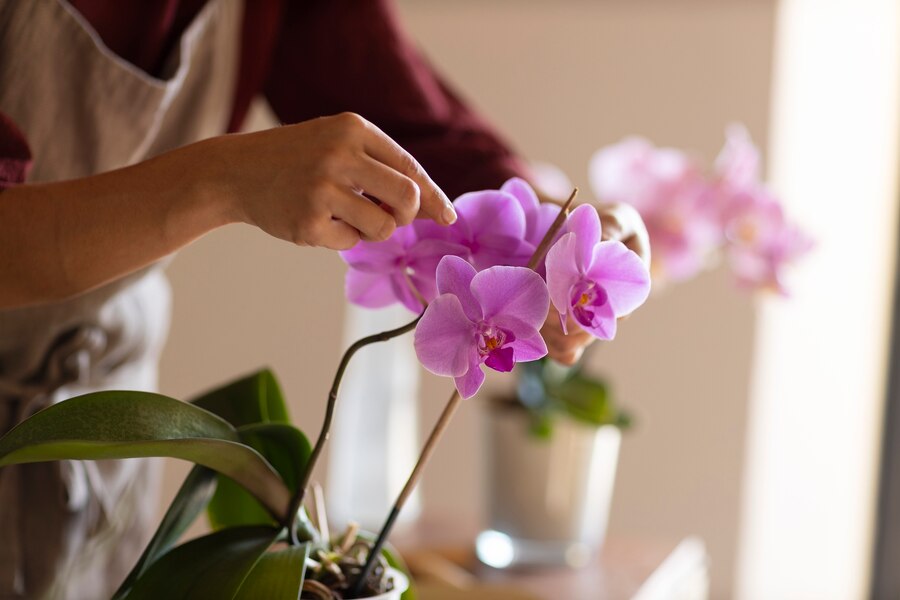
Though I am a professional writer being well-acquainted with many kinds of plants and flowers, I well know the delicate yet rare appeal of orchids. Even though they are easy to grow and can be found in any climate growing conditions, orchids are infected with diseases, with crown rot being the most detrimental. Those of you who have ever dealt with this problem know just how fast your favourite plants can be destroyed. Fortunately, the use of appropriate cultural practices and biological characteristics may substantially lessen crown rot risks. Among those bio-products, Trianum Shield, which is based on the active ingredient Trichoderma harzianum, can be named, and can become an effective and environmentally friendly means of protection of orchids.
Understanding Crown Rot
Crown rot takes place when water stagnates at the base of the leaves causing diseases from either fungi or bacteria. This difference often causes the affected area to become black and soft and in most cases the plant dies. In orchids, it can be particularly important to prevent the disease from developing rather than to cure it because some orchid crown rot treatments may be too strong.
The good news? Given our recommendations for the right cultural care and the use of safe sustainable biofungicides such as Trichderma harzianum, your orchids will be shielded against this damaging condition.
BEST PRACTICE CULTURE TO REDUCE CROWN ROT
The first thing, which needs to be done in a bid to avoid getting crown rot is good care. Following the years of experience I have gained I have understood that cultural practices are some of the most important requirements that any orchid requires. Here’s what you can do:
- Watering Technique: For the orchids never water them in the evening, the crown should dry first before the evenings. Don’t irrigate the foliage but rather at the base, near the roots. Gardeners allow water to accumulate in the crown area and since most of this area gets exposed to night, it gives a conducive environment for rot to develop.
- Well-Draining Medium: Orchids grow best in media and pots that provide good drainage for the plant. Bark, perlite, and sphagnum moss fit well to conform to good air circulation and proper drainage. Do not fill the area with compacted soil, or, this retains too much water in the root and crown area.
- Ventilation: The air must circulate also around your orchids to prevent moisture buildup around the crown or main stem. Your orchids should be issued to areas with adequate air circulation, or even use small fans in an enclosed setting.
- Positioning: Orchids should be placed in the right height of the pot to allow free draining of water without accumulation in the base of the pot. Pay attention to where the plant is placed within the pot and ensure it doesn’t get trapped in moisture.
- Regular Inspections: Once a week examine the state of the base of the leaves and the crown for any signs of discoloration or softening of the sample. Sometimes, the detection can occur before a person is completely infected with the disease.
How Trianum Shield Protects Orchids
However, this kind of cultural practices should not be overlooked; combining the biofungicide known as Trianum Shield (best fungicide for crown rot) strengthens the process. Crown rot is a fungal disease that has to be prevented and controlled by employing a natural fungi known as Trichoderma harzianum.
But even so, how does Trichoderma harzianum operate?
Expert Insights: Scientific Cause of Trichoderma harzianum
Scientists into microbial agriculture in the advanced Universities and research laboratories have addressed the benefits of Trichoderma harzianum as a plant disease control agent. Here’s why it’s a game-changer:
Biocontrol Agent: It works for the antagonism of a pathogenic group of fungi in the struggle for the place on the substrate surface and food resources. It effectively colonizes the niche in root structure of the orchid as well as the surrounding area; thus, it secludes the pathogens.
Induced Resistance: According to the research, Trichoderma harzianum enhances the production of plant’s physical barriers against any diseases attacks. This added resistance makes it less vulnerable to the attack of the crown rot and other diseases.
Sustainable and Eco-Friendly: In contrast with using chemical fungicides, Trichoderma harzianum is naturally occurring and non-toxic to other critters that are helpful to your garden. This plant easily meets the principles of sustainable gardening, therefore it would be suitable for gardeners succeeding in sustainable practices.
Soil Health: Trichoderma harzianum acts ultimately on the soil structure altering it for the better enabling the release of nutrients in the soil and leading to plant vigor. This is especially important for orchids as the state of the roots may also determine the health of the flowers with crown rot being a major vice.
Opinion of an expert about the sustainable solutions
According to Dr. Julia McPherson, a plant pathologist from the University of California, biological control agents such as Trichoderma harzianum have revolutionalized the way we manage plant ailments. These compounds offer long term protection without harming the environment like most conventional chemicals. People passionate about plants will find that employing a product such as Trianum Shield is a perfect way to introduce sustainable practices into their care routine.
GreenTech Labs’ Dr. Alan Rogers adds, “There is credible evidence that avails the capacity of Trichoderma harzianum in suppressing the fungal pathogens. What makes it stand out is that it is capable of promoting general well being of the plant in relation to diseases. It remains a must-have tool for every gardener out there.”
Integrating Conventional Model with Innovative Approach
As a professional gardener, I can tell that the treatment by the conventional methods and the biological ones works best. Crown rot seems quite destructive; however, proper watering regime, good air circulation and biocontrol agents such as Trianum Shield will ensure elegant and healthy orchids.
Ensure you embrace environmental friendly practices that ensure your orchids are safe adding to the ecosystem. That’s why when you have Trichoderma harzianum by your side you are not only protecting your plants against diseases but you are arming your plants for success.
CRYPTO
Key Factors to Consider When Furnishing Your Garage
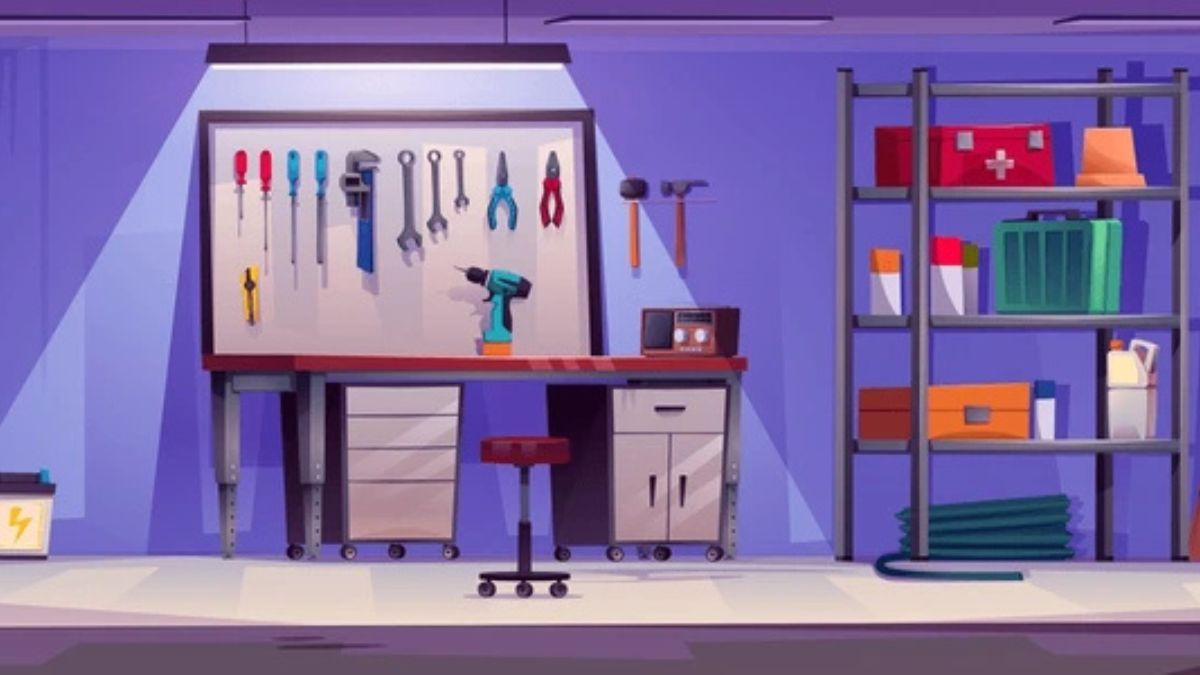
Transforming your garage into an organized and functional space requires a strategic approach, considering various factors that can maximize the utility of the area. No longer just a space for parking cars and storage, garages are increasingly seen as extensions of the home. Whether you’re looking to create a workshop, a fitness area, or simply enhance storage, several core aspects deserve careful thought. The design choice of your garage can have significant implications on its functionality, aesthetics, and overall usability. It’s not merely about putting furniture in place; it’s about creating an efficient environment tailored to your needs.

1. Determine the Purpose
Understanding the primary function of your garage is crucial before furnishing it. Will you be using the space for storage, a workshop, or perhaps a personal gym? Each of these uses has specific requirements that will dictate your furnishing choices. For instance, if you aim to shop garage cabinets, consider what items you need to store to select the right sizes and styles. If pursuing a workshop area, heavy-duty benches and tool storage will be vital. Defining your intent allows you to visualize how the space will be utilized and dictates the layout and design elements needed. Taking the time to clarify the purpose will also help you set a realistic budget for the project.
2. Assess Your Space
Before bringing in furniture or storage solutions, take stock of your garage’s dimensions and layout. A clear understanding of the space available helps to avoid overcrowding and ensures optimal use of every square foot. Measure the walls, ceiling height, and various nooks and crannies that could be utilized. Consider if there are any structural elements, such as columns or windows, that might influence your design choices. Knowing these factors enables you to choose appropriately sized furnishings, keeping in mind that compact solutions may be necessary for smaller garages. This assessment will also help you identify areas where additional electrical outlets or plumbing might be needed.
3. Storage Solutions
Effective storage is one of the biggest challenges in a garage environment. It’s essential to select solutions that keep items organized and accessible. Depending on your chosen purpose, items can range from gardening supplies to automotive tools. Cabinets, shelves, and pegboards all play pivotal roles in an efficient organization. Opt for vertical storage options whenever possible to maximize floor space. The installation of overhead racks can also help store seasonal items that are used less frequently while keeping the clutter at bay. Labeling storage bins or drawers further simplifies locating items when needed. Labeling storage bins or drawers further simplifies locating items when needed.
4. Lighting and Ventilation
Poor lighting and ventilation can turn a once-functional garage into an unwelcoming dungeon. Proper illumination not only enhances safety but also improves visibility when working on projects or searching for items. Consider installing overhead LED lights, task lighting for specific areas, and wall-mounted fixtures for a well-lit environment. Additionally, ensure that your garage has adequate airflow to prevent dampness and promote comfort, especially if you’re working in there for extended periods. Investing in anti-slip coatings can also enhance safety, especially in high-traffic areas. Installing an exhaust fan or a window can help maintain fresh air circulation.
5. Flooring Choices
The type of flooring you choose will influence your garage’s functionality and maintenance. Concrete is typical, but it can be cold and hard, making it less inviting. Epoxy coatings or modular tiles can provide warmth, comfort, and durability while also serving to enhance the aesthetics. Consider the kind of activities that will take place in the garage when selecting flooring. If heavy machinery or tools will be used, ensure the material can withstand potential spills and impacts. Investing in anti-slip coatings can also enhance safety, especially in high-traffic areas.
6. Personal Touches
Adding personal touches can turn your garage from a mere utility space into an area that reflects your personality. This might include paint colors, signs, or wall art that resonate with your sense of style. Consider incorporating ergonomic tools and furniture that not only looks good but also enhances functionality. Small details, like a sound system or a mini-fridge, can make the garage a pleasant place to spend time, whether for work or leisure. Even small additions, like a welcome mat or a coffee station, can make the space feel more inviting.
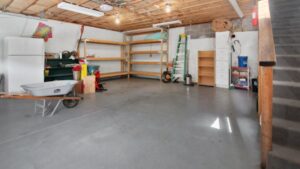
Furnishing your garage thoughtfully enables you to create a versatile space that works for you. By considering its purpose, assessing available space, opting for suitable storage, ensuring proper lighting and ventilation, choosing the right flooring, and adding personal touches, you can transform your garage into an enjoyable and functional part of your home.
HOME IMPROVEMENT
Garage Door Repair vs. Replace: Which Option Is Right for You?

Your garage door plays a vital role in the functionality, safety, and appearance of your home. However, like any other component, it doesn’t last forever. Over time, wear and tear, accidents, or outdated design can make you question whether it’s time to repair or replace your garage door.
Making the right decision between repair and replacement depends on several factors, including the extent of the damage, cost considerations, and the age of the door. If you’re in need of expert advice, services like garage door repair in Huntington Beach can help evaluate your situation. In this comprehensive guide, we’ll explore both options in detail to help you decide what’s best for your situation.
When to Repair Your Garage Door
Repairing a garage door is often the most cost-effective and practical solution when the issues are minor or isolated. Here are the key scenarios where repair is the better option:
1. Minor Cosmetic Damage
- Examples: Dents, scratches, chipped paint, or minor rust spots.
- Solution: If the door’s appearance has been affected by minor issues, repairing or repainting it can restore its look without requiring a full replacement.
2. Broken Components
- Examples: Faulty springs, cables, or rollers; a damaged opener; or misaligned tracks.
- Solution: These parts are essential for the door’s operation but can typically be repaired or replaced individually at a reasonable cost.
3. Door Still Functions Properly
If the door opens and closes smoothly despite minor issues, repair is usually sufficient. A professional can fix the problem without disrupting its overall functionality.
4. Cost-Effective Repairs
Repairs make sense when the cost of fixing the issue is significantly lower than the cost of a replacement. For example, replacing a torsion spring or repairing a track will generally cost less than replacing the entire door.
5. The Door Is Relatively New
If your garage door is less than 10 years old, repairing it is often the better option. Newer doors tend to have parts that are readily available, making repairs quicker and cheaper.
When to Replace Your Garage Door
While repairing a garage door can be a quick fix, there are situations where replacement is the smarter investment. Let’s explore the common reasons for opting for a new garage door:
1. Extensive Damage
- Examples: Severe dents, warping, or multiple broken panels.
- Solution: If the damage affects the structural integrity or overall functionality of the door, a replacement is often the best option. Patching up extensive issues can lead to recurring problems.
2. Old or Outdated Door
- Signs: The door is over 15–20 years old or no longer matches the style of your home.
- Solution: Replacing an aging or outdated garage door improves both the aesthetic and energy efficiency of your home. Modern doors often come with better insulation and materials.
3. High Repair Costs
If the cost of repairs is more than 50% of the price of a new door, it’s worth considering replacement. Investing in a new door can save you money in the long run by reducing the need for frequent repairs.
4. Poor Energy Efficiency
Older garage doors may lack proper insulation, leading to higher heating and cooling costs. Replacing your door with an insulated model can enhance energy efficiency and comfort, especially if your garage is attached to your home.
5. Safety and Security Concerns
- Issues: Broken safety sensors, faulty locks, or outdated materials.
- Solution: A new garage door with modern safety features, like automatic reversal systems and secure locking mechanisms, provides better protection for your family and belongings.
6. Increased Home Value
A new garage door can significantly boost your home’s curb appeal and resale value. If you’re planning to sell your home soon, investing in a stylish, modern door can make a great impression on potential buyers. For professional assistance, consider services like garage door repair in Huntington Beach to ensure your garage door is in top condition.
Factors to Consider When Deciding
To make the right decision, you’ll need to weigh several important factors. Here’s what to consider:
1. Extent of the Damage
Assess how severe the damage is. For example:
- A single damaged panel can often be repaired or replaced individually.
- Structural damage affecting the frame or multiple panels usually warrants a full replacement.
2. Age of the Garage Door
- Doors under 10 years old: Repairs are typically the best option unless the damage is severe.
- Doors over 15 years old: Replacement is often more cost-effective, as older doors may require frequent repairs and lack modern features.
3. Repair Costs vs. Replacement Costs
Compare the costs of repair and replacement:
- If repairs cost less than 50% of the price of a new door, repair is generally the better choice.
- If repairs are costly or recurring, replacement may save you money over time.
4. Energy Efficiency
If your garage door lacks insulation or allows drafts, upgrading to a new, energy-efficient door can reduce energy bills and improve comfort.
5. Aesthetic Appeal
Consider whether the door’s appearance fits your home’s style. If it looks outdated or detracts from your home’s curb appeal, a replacement might be the way to go.
Pros and Cons of Repairing a Garage Door
Pros:
- Cost-Effective: Repairs are generally cheaper than full replacement.
- Faster Solution: Most repairs can be completed quickly.
- Environmentally Friendly: Repairing extends the life of your existing door, reducing waste.
Cons:
- Temporary Fix: Repairs may not address underlying issues, leading to future problems.
- Limited Improvement: Repairs may not enhance the door’s appearance or energy efficiency.
Pros and Cons of Replacing a Garage Door
Pros:
- Enhanced Curb Appeal: A new door can modernize your home’s exterior.
- Improved Functionality: New doors come with updated technology and safety features.
- Energy Efficiency: Insulated doors reduce heating and cooling costs.
- Long-Term Savings: A new door requires fewer repairs and maintenance.
Cons:
- Higher Initial Cost: Replacing a garage door is more expensive upfront.
- Time-Consuming: Installation may take longer than repairs.
Steps to Take Before Making Your Decision
- Inspect the Door: Look for signs of damage, wear, or malfunction.
- Consult a Professional: A professional garage door technician can assess the damage and recommend the best course of action.
- Get a Cost Estimate: Obtain quotes for both repair and replacement to compare costs.
- Evaluate Your Long-Term Needs: Consider how long you plan to stay in your home and the door’s impact on your property value.
Garage Door Repair and Replacement Costs
Average Costs:
- Repair Costs: $100–$500, depending on the issue (e.g., spring replacement, cable repair, track alignment).
- Replacement Costs: $500–$3,000, depending on the material, size, and features of the new door.
Cost-Saving Tips:
- Regular maintenance can prevent costly repairs.
- Check your warranty to see if parts or labor are covered.
- Consider energy savings when upgrading to an insulated door.
Conclusion
Deciding between repairing or replacing your garage door depends on various factors, including the extent of damage, age of the door, repair costs, and your long-term goals. While repairs are ideal for minor issues and newer doors, replacement is often the better choice for older doors or those with extensive damage. Take time to assess your situation and consult with a professional if needed. By making an informed decision, you’ll ensure your garage door functions safely and efficiently while adding value to your home.
HOME IMPROVEMENT
Why Home Renovation Projects Can Significantly Boost Your Property Value
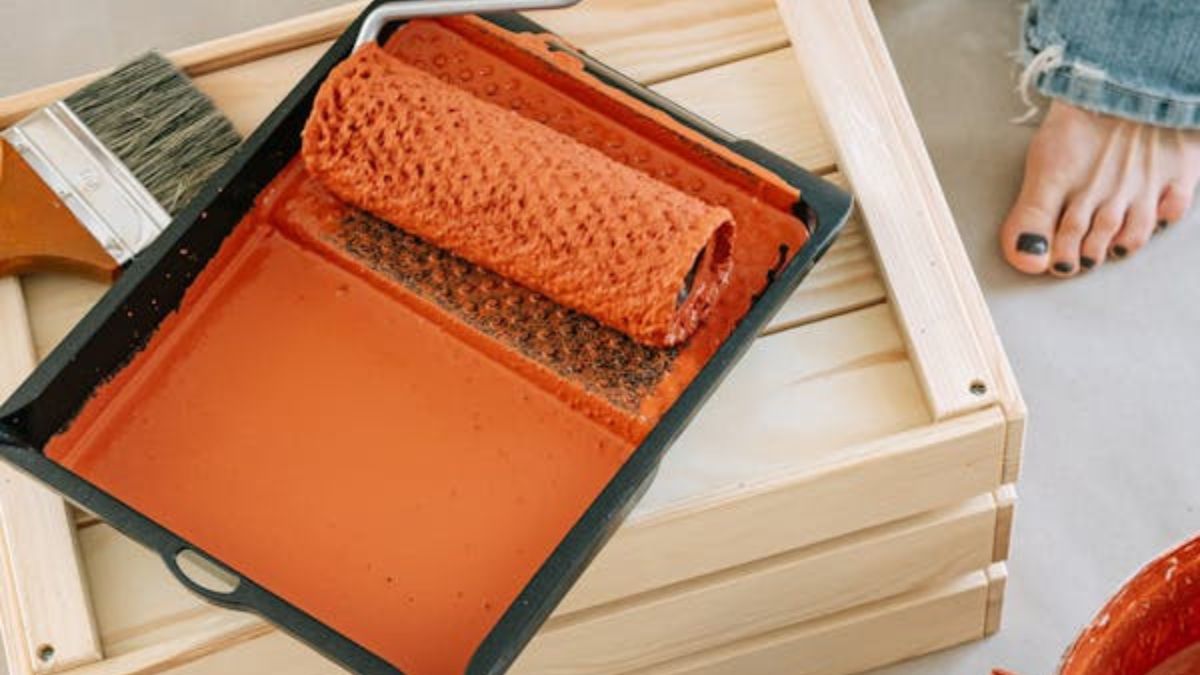
Conceiving the perfect home goes beyond decoration—it involves remodeling and renovations that improve comfort and value. As homes age, they may fall behind modern trends, reducing appeal to buyers. Home renovations refresh your space and can significantly raise its market value. Whether a minor update or a major overhaul, these projects signal that a property is well-maintained, boosting buyer confidence and increasing the potential for a profitable sale. Let’s explore why home renovations are a smart investment for personal and financial gain.

Adding Functional Square Footage
Increasing a home’s square footage through additions or finishing basements and attics can create immense value. A well-executed room addition can return about 60-70% of its costs at resale, particularly if it meets buyers’ expectations for space. Creating rooms that serve specific purposes—like home offices or playrooms—aligns well with contemporary living demands.
In addition, finishing previously unused spaces like basements or attics enhances usability and amplifies overall home value. Home renovations that expand square footage require thoughtful planning, and working with remodeling professionals such as those at dreamcatcher-remodeling.com can ensure such projects are executed efficiently and effectively. With careful design and attention to detail, these improvements can provide long-term benefits that make your home more functional and appealing.
Enhanced Curb Appeal
Curb appeal is your home’s first impression, beginning at the front yard. Renovation projects targeted at the home’s exterior—like landscaping, painting, and new siding—can deliver exceptional returns. Studies show that a well-maintained exterior can improve property value by 7-10%. Homes inviting from the outside often attract more buyers, creating the initial impression that can lead to a sale.
Landscaping improvements such as adding flower beds, lawn maintenance, or outdoor lighting can draw attention and create a welcoming environment. Modernizing the exterior paint can refresh your home’s look without requiring a significant investment. When potential buyers see a well-presented house, they will likely form a more favorable opinion, paving the way for higher offers.
Increased Energy Efficiency
A home that boasts energy-efficient features stands out in the real estate market. Renovations focusing on improving insulation, window replacement, and updating heating and cooling systems can substantially impact. A National Association of Realtors report indicates that energy efficiency improvements can contribute to a value increase of as much as 15%.
Investing in renewable energy sources like solar panels further enhances efficiency and considerably lowers utility bills. These investments align your home with sustainable living trends and appeal to environmentally conscious buyers. As energy costs continue to rise, the demand for energy-efficient homes will likely grow, making this a wise renovation avenue.
Modernized Kitchens
The kitchen is widely regarded as the heart of the home, and modernizing it can yield one of the highest returns among renovation projects. A survey from Remodeling magazine found that a minor kitchen remodel recovers over 81% of its costs upon resale. Upgrades can include added storage solutions, contemporary countertops, and energy-efficient appliances.
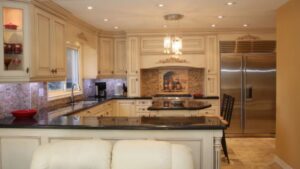
A beautifully designed kitchen fosters functionality and an inviting space for social interactions. As buyers envision their lives in your home, a well-appointed kitchen can persuade them to make a better offer. Thus, renovating the kitchen remains a paramount investment for prospective sellers looking to increase property value.
Updated Bathrooms
Like kitchens, updated bathrooms can significantly enhance a home’s appeal and market value. Small enhancements, such as new fixtures, energy-efficient toilets, and stylish tiles, can invigorate an old bathroom. Investing in bathroom remodeling can yield returns upwards of 70% in resale value, emphasizing the importance of these updates.
Buyers often focus on the condition and aesthetics of bathrooms during their home search. A clean, chic bathroom with modern amenities creates an emotional connection that can lead to swift offers. Homeowners should consider working with remodeling experts who can help transform outdated bathrooms into spa-like retreats, making them more attractive to buyers.
Improved Layout and Functionality
As lifestyles evolve, so do the needs for space and layout. Renovations that improve the flow of a home—such as open floor plans—can enhance functionality and appeal. Homes with flexible layouts cater to diverse families and lifestyles, thus attracting a more extensive buyer pool. An article from Houzz found that 41% of homeowners renovated to create a more open layout, underscoring its popularity.
Addressing practical concerns, such as increasing storage and creating multi-functional spaces, can elevate the property value. By optimizing the layout, homeowners can show potential buyers that their needs have been considered, creating a lasting impression and encouraging higher offers.
When you take the time to make thoughtful renovations, each upgrade can significantly impact your property value. The investment in home improvements ultimately pays off by ensuring your property stands out in a crowded real estate market. Many homeowners invest time and money into renovations to improve their living space. While personal motives play a significant role, the enduring benefits of increased property value must be considered. Strategic renovations allow homeowners to elevate their property’s worth and appeal to potential buyers. A well-renovated home speaks to quality, care, and modern living.

 Cartoon9 months ago
Cartoon9 months agoUnlocking the Potential of Nekopoi.care: A Comprehensive Guide

 Game8 months ago
Game8 months agoExploring Aopickleballthietke.com: Your Ultimate Pickleball Destination

 BUSINESS8 months ago
BUSINESS8 months agoWhat Companies Are In The Consumer Services Field

 TECHNOLOGY7 months ago
TECHNOLOGY7 months agoThe Guide to Using Anon Vault for Secure Data Storage

 HOME IMPROVEMENT9 months ago
HOME IMPROVEMENT9 months agoVtrahe vs. Other Platforms: Which One Reigns Supreme?

 ENTERTAINMENT9 months ago
ENTERTAINMENT9 months agoThe Epic Return: Revenge of the Iron-Blooded Sword Hound

 HEALTH9 months ago
HEALTH9 months agoUnveiling the Mystery of Pikruos: A Comprehensive Guide

 HOME IMPROVEMENT9 months ago
HOME IMPROVEMENT9 months agoExploring the Events of 2023-1954: A Look Back in Time
















